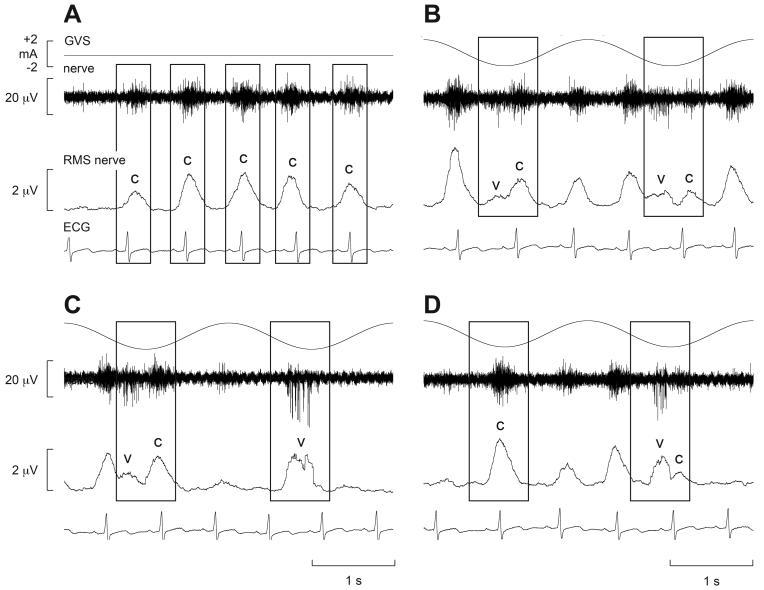Fig. 11.
Cardiac-locked muscle sympathetic bursts are modulated by dynamic vestibular inputs. Experimental records from one subject. Spontaneous muscle sympathetic nerve activity was recorded from the peronei motor fascicle of the common peroneal nerve, and is presented as the filtered neurogram (nerve) and as an RMS-processed signal (RMS nerve). In each panel, the top trace indicates the onset and phase of the sinusoidal modulation when applied (B-D) and the bottom trace records the ECG. Each panel spans a 4 s data period. A, baseline activity; B-D, consecutive sequences obtained during sinusoidal galvanic vestibular stimulation (GVS) at 0.5 Hz. The rectangles illustrate the relationship between the sympathetic burst and the cardiac rhythm (c) and the vestibular rhythm (v). Reproduced from (29), with permission.

